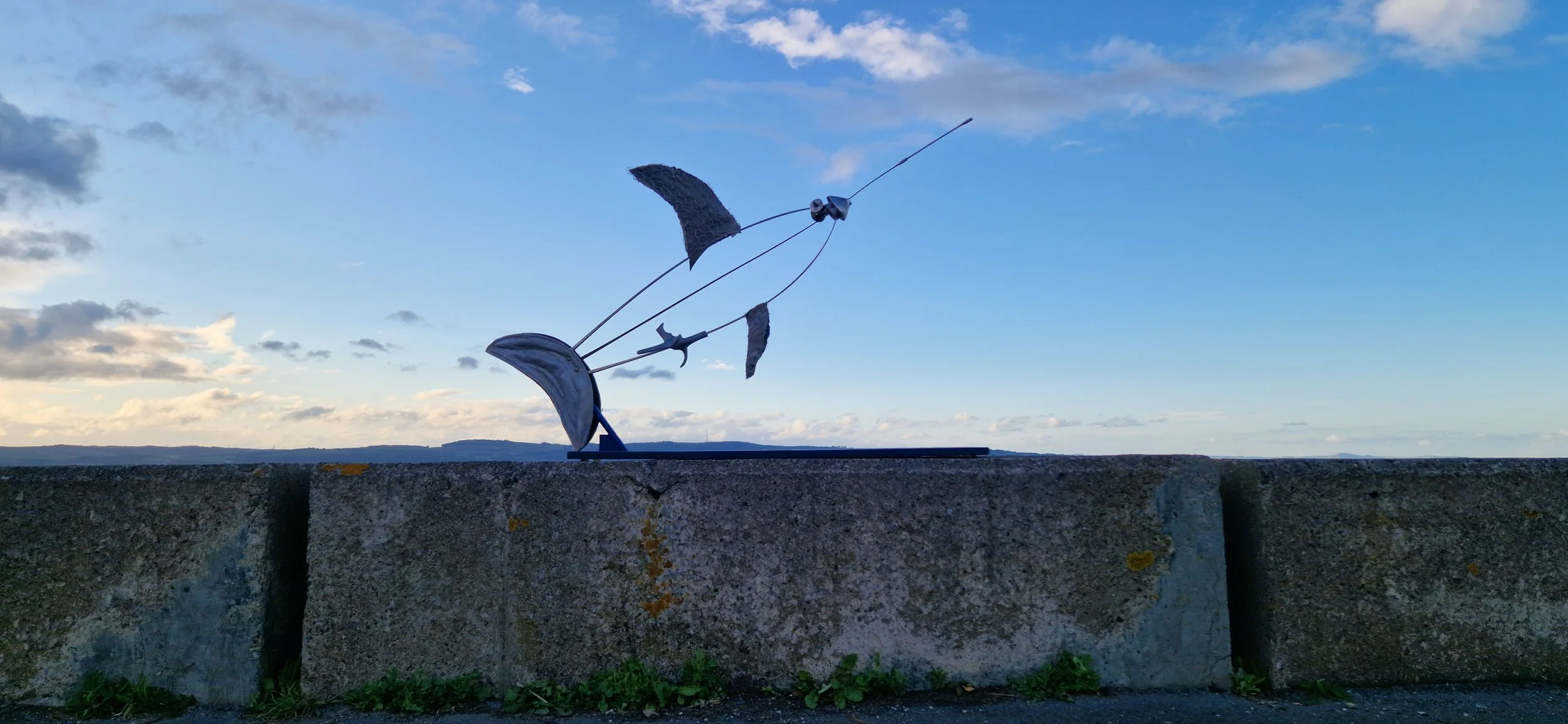Swordfish (a)
FENCING FISH
Jonathan is a fencer, so we knew we wanted to use used or broken fencing swords in some way to create the piece. It was also our ambition to only use materials and equipment that no longer served their original purposes and would have otherwise been thrown away. Initially, we planned to create a two dimensional mosaic style image using snapped pieces of fencing swords. Another idea was to layer fencing swords together to create the canvas or backdrop for a painting of a swordfish. Ultimately, we decided to try and create a three dimensional sculpture which captured the way the swordfish jumps out the water (“breaching”), given the parallels to the fencing move “fleche” in which a fencer makes a surprise, explosive attack on their opponent in a leaping motion.
Using three fencing swords (“foils”) to create the basic outline of the swordfish body and the sword-shaped bill, we curved and mounted them together to create the correct shape. We formed the other main parts of the fish from different pieces of used fencing equipment, including using: a bib (the neck protector from a fencing mask) to create the tail; a grip (the handle of a fencing sword) for one of the small fins; a guard (which protects the fencer’s hand) to form the nose; the silvery lame (worn on top of a jacket in order to register when a point is scored) to make the large dorsal fin and the two smaller pectoral fins; and, sockets (used to connect the fencer to the scoring equipment) to make the eyes.
Thank you to members of Edinburgh Fencing Club for donating fencing equipment.
Artist: Ellen Starkey and Jonathan Woollard
Fish Profile
Swordfish - Xiphias gladius
Conservation status
Swordfish are a species under threat.
The IUCN assess Swordfish as Near Threatened. They state the fish ‘is estimated to have declined by at least 22% over the past 20 years’, although stocks have increased in the North Atlantic: ‘Overfishing is occurring in the Mediterranean and the South Atlantic stocks, which are estimated to account for at least 25% of this species' global population’. (IUCN)
They are listed on the Greenpeace Red List
‘Swordfish is primarily targeted using longlining. This technique unintentionally catches and kills significant numbers of other species. The South Atlantic stock status is uncertain and only Eastern Pacific Ocean stocks are considered to be relatively healthy’. (Greenpeace)
Of the 12 assessments from the MCS, only 2 fishing areas are given the Best Choice rating. (These cover certain North Atlantic fleets and South West Pacific fleets which are Marine Stewardship Council (MSC) certified). Of the other areas, 7 are In Need of Improvement and 3 to be Avoided.





